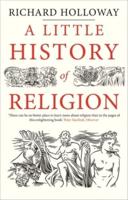Publisher's Synopsis
Abstract
The earliest extant Chinese Buddhist manuscript the Buddhasaṅgiti-sutra was excavated at Toyuq in Turfan. It is dated the 6th year of the Yuankang era (296 CE) during the Western Jin Dynasty (266-316 CE). This sutra is a copy by Zhu Fashou, one of Dharmarakṣa's monk disciples, a distinctive scribe on the translation team. Both historical documentation and archæological findings of the period when Buddhism was initially transmitted into China demonstrate that the copying of Buddhist texts by monk scribes from Central Asia played a key role. The work of these scribes also enhanced the creation of diverse and vigorous calligraphic styles from the 3rd to 5th centuries. However, before the 20th century, early Buddhist scribes or foreign scribes were little known in the history of Chinese calligraphy, or in official records.
The discovery of the Dunhuang and Turfan manuscripts in the early 20th century provided scholars with new material with which to examine early Buddhist scribal culture. This monograph considers the culture of early sacred writing, and the role of early Buddhist scribes, scribal workshops, scriptural calligraphy, and the expertise of these early scribes, for the history of Chinese calligraphers and calligraphy.











